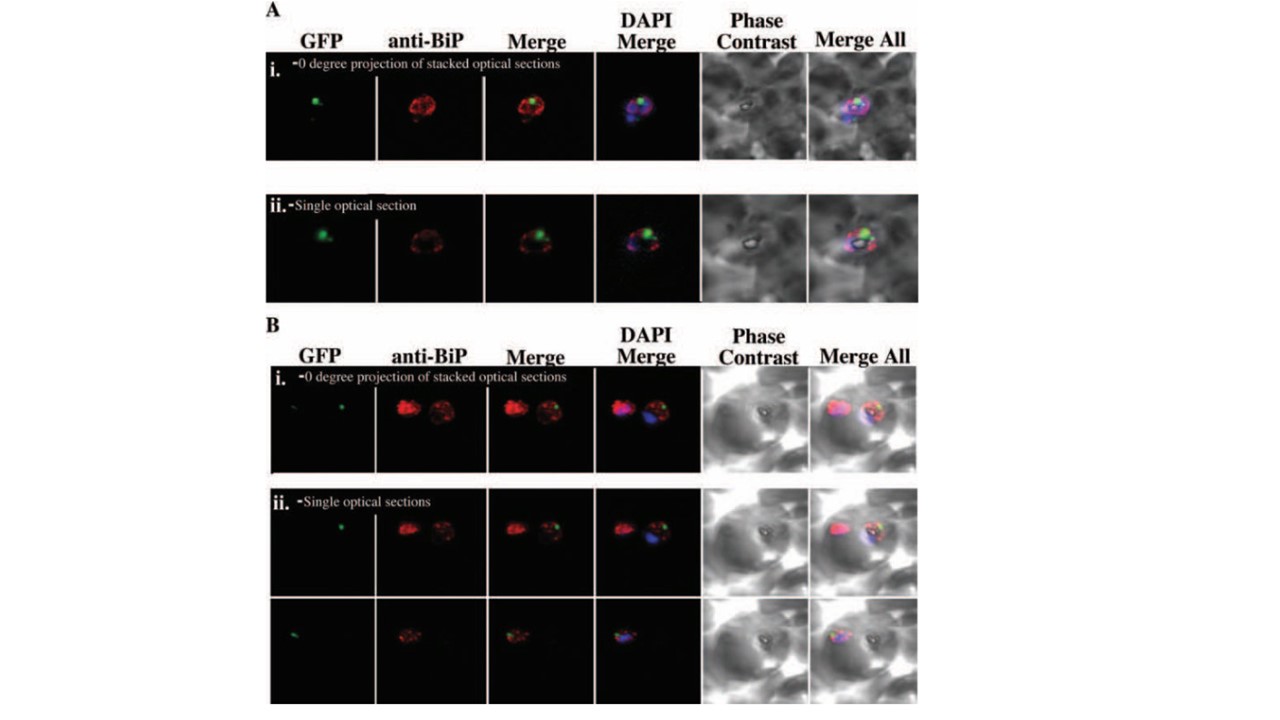BFA treatment does not abolish the apicoplast–ER association. ACP(l)-GFP expressing parasites were treated with 5 mg ml-1 of BFA for 3 h and then analysed by IFA with anti-BiP antibody labelling to assess the relationship that the ER and apicoplast in the presence of BFA. A. Anti-BiP IFA of a BFA-treated ACP(l)-GFP expressing parasite. (i) 0° projection of stacked optical sections demonstrating that the ER has changed shape and now shows a more peripheral localization. However, the apicoplast and ER still share common space. (ii) A single optical section demonstrating that the even in the presence of BFA the apicoplast and ER are still closely juxtaposed. B. Anti-BiP IFA of two ACP(l)-GFP expressing parasites treated with BFA. (i) A 0° projection of stacked optical sections demonstrating that each apicoplast is closely associated with a strand of ER. (ii) Two single optical sections demonstrate that both parasites apicoplasts are closely opposed with the ER. Tonkin CJ, Struck NS, Mullin KA, Stimmler LM, McFadden GI. Evidence for Golgi-independent transport from the early secretory pathway to the plastid in malaria parasites. Mol Microbiol. 2006 61(3):614-30. PMID: 16787449.
Other associated proteins
| PFID | Formal Annotation |
|---|---|
| PF3D7_0208500 | acyl carrier protein |
